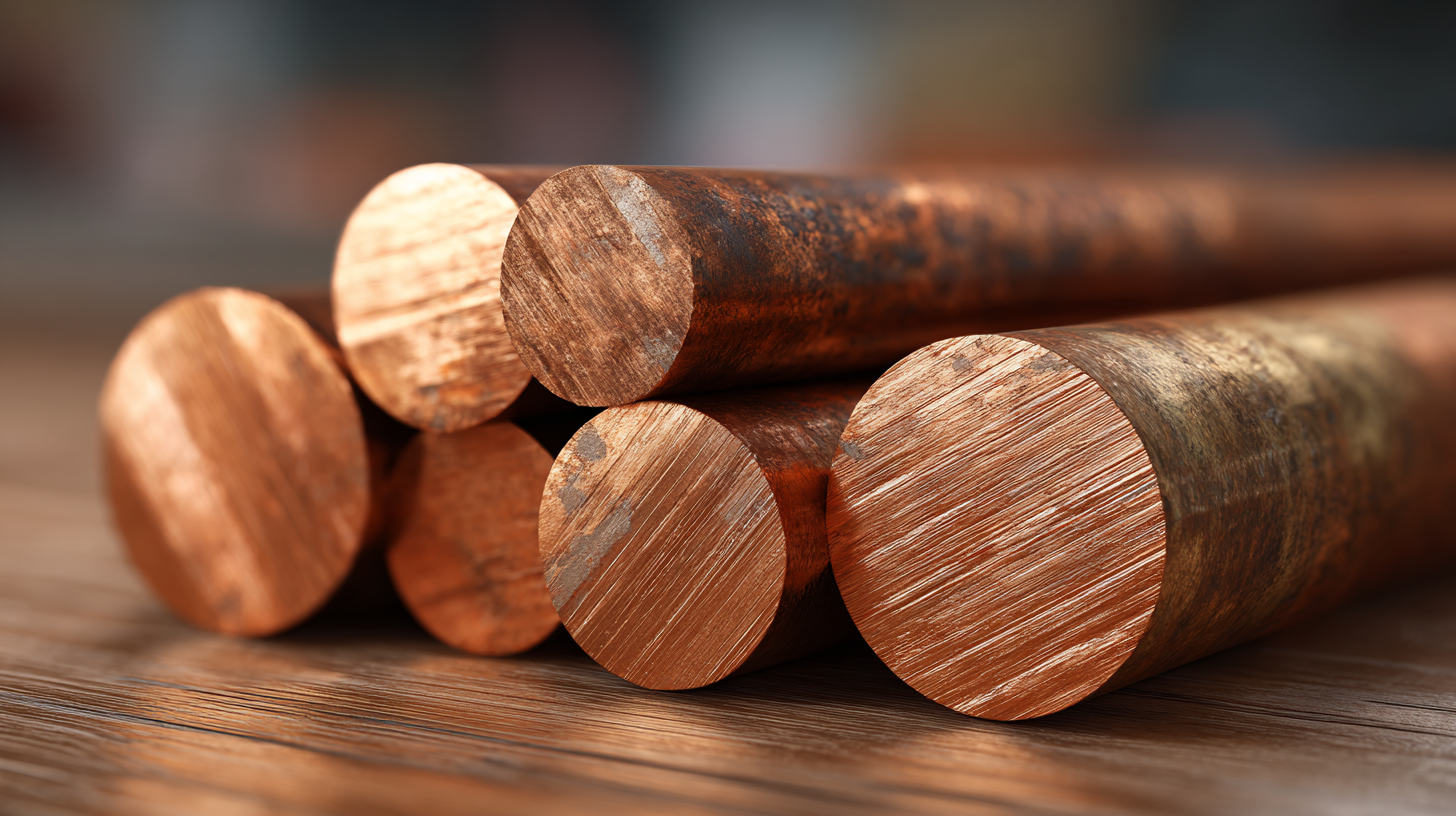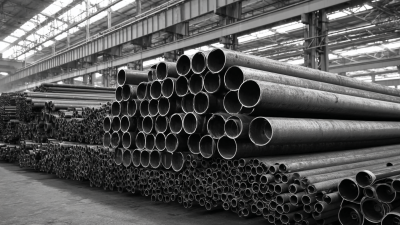7 Essential Tips for Maximizing the Benefits of Copper Nickel in Your Projects
Copper Nickel alloys are gaining significant attention in various industries due to their impressive properties, particularly in marine applications. According to a report by the Global Copper-Nickel Market, the demand for these alloys is projected to grow at a CAGR of over 5% from 2023 to 2030, driven by their corrosion resistance and excellent mechanical strength. In sectors such as shipbuilding, oil and gas, and desalination, the unique characteristics of Copper Nickel make it a preferred material for components such as heat exchangers, piping systems, and marine hardware. However, to fully leverage the advantages of Copper Nickel in your projects, it is essential to adopt effective strategies. This article presents seven essential tips to help professionals maximize the benefits of Copper Nickel, ensuring optimal performance and longevity in their applications.
Understanding Copper Nickel Alloys and Their Unique Benefits
Copper-nickel alloys, known for their excellent corrosion resistance and mechanical properties, have become increasingly popular in various industrial applications. These metals are particularly valued for their performance in marine environments, where exposure to seawater can lead to significant material degradation. The unique combination of copper and nickel not only enhances the strength and durability of the alloy but also improves its resistance to biofouling, making copper-nickel a preferred choice in shipbuilding and offshore structures.

In addition to their corrosion resistance, copper-nickel alloys exhibit remarkable thermal and electrical conductivity, which is beneficial in applications like heat exchangers and electrical components. Their ease of fabrication allows for versatile design possibilities, enabling engineers to create complex shapes and components tailored to specific project requirements. By understanding the inherent advantages of copper-nickel alloys, project managers can leverage these benefits to enhance the longevity and efficiency of their designs, ultimately leading to more successful and cost-effective outcomes.
Key Considerations for Selecting the Right Copper Nickel Grade
When selecting the right copper-nickel grade for your projects, it is essential to consider the specific environmental conditions and performance requirements of the application. Copper-nickel alloys, well-known for their excellent corrosion resistance, are particularly beneficial in marine environments, where exposure to seawater can lead to significant degradation of materials. Therefore, evaluating the salinity, temperature variations, and biological factors is crucial. Grades like C70600 (90/10 copper-nickel) and C71500 (70/30 copper-nickel) provide distinct advantages based on these parameters.
Another key consideration is the mechanical properties of the chosen alloy. Different grades of copper-nickel offer varying levels of strength, ductility, and weldability, which may be critical depending on the fabrication methods you intend to use. For instance, if your project involves complex welding processes, selecting a grade with optimal weldability characteristics becomes paramount. Moreover, considering long-term performance, including wear resistance and tolerance to stress corrosion cracking, will ensure that the copper-nickel alloy meets the durability demands throughout its lifecycle. By taking these factors into account, you can maximize the benefits of copper-nickel in your specific applications.
7 Essential Tips for Maximizing the Benefits of Copper Nickel in Your Projects
This chart illustrates the importance of various factors when selecting the right grade of Copper Nickel for your projects. Understanding these factors can significantly enhance the performance and longevity of your applications.
Best Practices for Fabricating and Installing Copper Nickel Components
When fabricating and installing copper nickel components, it’s crucial to prioritize cleanliness and proper handling to avoid contamination. Start by ensuring that all surfaces are free from dust, oils, and other impurities. Utilizing non-abrasive cleaning methods and appropriate solvents can help maintain the integrity of the metal.
 Once cleaned, consider using protective coatings or wraps during storage and transportation to prevent exposure to moisture and corrosive elements, which can adversely affect the quality of the copper nickel.
Once cleaned, consider using protective coatings or wraps during storage and transportation to prevent exposure to moisture and corrosive elements, which can adversely affect the quality of the copper nickel.
In addition to maintaining cleanliness, precise fabrication techniques are essential for optimal performance. Employing correct welding practices, such as using compatible filler materials, enhances the strength and durability of the joints. It is also advisable to employ preheating and post-weld heat treatments to minimize the risk of cracking and distortion. Effective installation techniques, including proper alignment and support during assembly, should be followed to ensure that the components function efficiently in their intended applications. Attention to detail during these processes will significantly contribute to the longevity and effectiveness of copper nickel projects.
Leveraging Corrosion Resistance for Long-Term Project Performance
Copper Nickel alloys are increasingly recognized for their exceptional corrosion resistance, particularly in harsh environments such as marine and offshore applications. Their unique properties make them an ideal choice for long-term project performance. Research highlights, such as the integration of advanced materials like core-shell nanohybrids into epoxy resin matrices, demonstrate that innovation in coating technology can further enhance corrosion resistance. For example, a study presented a high-performance waterborne anti-corrosion coating that showcases significant performance improvements in simulated deep-sea conditions. This suggests that leveraging the corrosion-resistant capabilities of Copper Nickel can be paired with cutting-edge coating solutions for enhanced durability.
Moreover, the trend towards sustainable building materials emphasizes the importance of developing coatings that not only protect metal substrates but also align with environmental goals. For instance, a recent analysis indicated that functional coatings featuring nanosheets and quantum dots could significantly elevate the anti-corrosion characteristics of traditional materials. This synergy not only improves barrier properties but also provides self-detection and self-healing capabilities, which are critical for long-term resilience in corrosive environments. By focusing on these innovative approaches, projects utilizing Copper Nickel can achieve a higher level of performance and sustainability, ensuring their longevity and efficacy in challenging settings.
7 Essential Tips for Maximizing the Benefits of Copper Nickel in Your Projects - Leveraging Corrosion Resistance for Long-Term Project Performance
| Tip Number |
Tip Description |
Key Benefits |
Application Areas |
| 1 |
Utilize Copper Nickel Alloys |
Excellent corrosion resistance and longevity |
Marine applications, cooling systems |
| 2 |
Regular Maintenance and Inspection |
Early detection of corrosion issues |
Pipelines, infrastructure |
| 3 |
Optimize Design for Flow Dynamics |
Minimized erosion and turbulence |
Pipelines, pumps |
| 4 |
Implement Protective Coatings |
Enhanced protection against environmental factors |
Exposed surfaces, storage tanks |
| 5 |
Use Appropriate Joining Techniques |
Reduction of galvanic corrosion |
Fabrication, assembly |
| 6 |
Educate Project Teams |
Increased awareness of best practices |
All project areas |
| 7 |
Select Quality Suppliers |
Ensured material integrity and performance |
Material sourcing |
Cost-Effectiveness Analysis: Maximizing ROI with Copper Nickel Materials
When considering copper nickel materials for your projects, a cost-effectiveness analysis is crucial to maximizing your return on investment (ROI). Copper nickel alloys offer excellent resistance to corrosion and biofouling, making them ideal for marine applications. By choosing these materials, project managers can reduce maintenance costs and prolong the lifespan of their structures, ultimately maximizing their ROI.
One essential tip is to evaluate the long-term benefits of using copper nickel over cheaper alternatives. While initial costs may be higher, the reduced wear and tear can lead to substantial savings in the long run. Additionally, conducting a thorough lifecycle analysis can help quantify these savings, allowing for informed budget decisions that support greater efficiency and cost management.
Furthermore, collaborating with experienced suppliers can yield invaluable insights into how to optimize the use of copper nickel in your specific project. These experts can provide guidance on material selection, fabrication techniques, and industry best practices, ensuring that the benefits of copper nickel are fully realized. Engaging in such partnerships not only enhances the project's cost-effectiveness but also leverages knowledge that can further boost your project's success.

Home
About Us
Products
Carbon & Carbon Alloy Steel
Stainless Steel
Copper & Nickel Alloy
Heat Efficiency Tubes
Pipe Fittings
Pipe Flanges
Gasket, Stud Bolt &Nut
Industrial Valves
Tech & Service
Blog
Contact Us




 Once cleaned, consider using protective coatings or wraps during storage and transportation to prevent exposure to moisture and corrosive elements, which can adversely affect the quality of the copper nickel.
Once cleaned, consider using protective coatings or wraps during storage and transportation to prevent exposure to moisture and corrosive elements, which can adversely affect the quality of the copper nickel.





